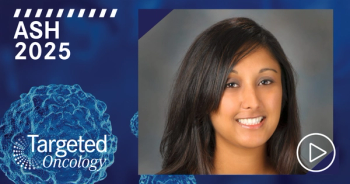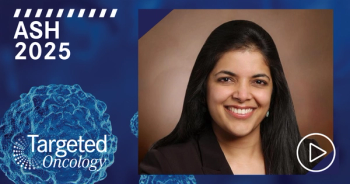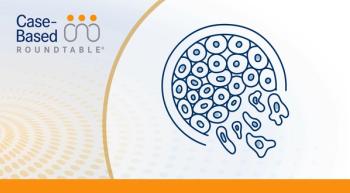
Targeted Therapies in Oncology
- June 1, 2022
- Volume 11
- Issue 8
- Pages: 92
Second CAR T Infusion Could Lead to New Response in B-ALL
Several treatment options are being explored for patients who have residual disease or who relapse after CAR T-cell therapy, including a possible second infusion with the same CAR T-cell product.
Young patients with relapsed or refractory B-cell acute lymphoblastic leukemia (B-ALL) who had a suboptimal response or relapse after chimeric antigen receptor (CAR) T-cell therapy could benefi t from reinfusion, according to a retrospective review (NCT03827343).
“Our study provides important insights into [second CAR T-cell infusion] outcomes, including with antigen targets beyond CD19,” the study authors, including corresponding author Nirali N. Shah, MD, MHSc, of the National Cancer Institute (NCI), wrote in their report published in the Journal for ImmunoTherapy of Cancer.
Several treatment options are being explored for patients who have residual disease or who relapse after CAR T-cell therapy, including a possible second infusion with the same CAR T-cell product.
The retrospective review looked at patients with B-ALL who received a reinfusion in 1 of 3 phase 1 NCI-based clinical trials (NCT01593696, NCT02315612, NCT0344839). At fi rst CAR T-cell therapy infusion, patients received either an anti-CD19, anti-CD22, or an anti-CD19/CD22 agent. If the patients had relapse after complete remission (CR) or suboptimal response and CAR expansion, they were offered a second infusion (n = 18).
The primary aim of the review was to assess CR rates of second infusions and the rate of adverse events (AEs). Secondary goals included the characterization of CAR expansion and antigen expression as well as the impact of the intensity of lymphodepletion.
A total of 136 patients were treated across the 3 studies, but only 18 (13.2%) went on to receive a second infusion with the same CAR product. As of the time of the second infusion, the median age of patients was 19 (range, 8-31). A majority of the patients were male (88.9%), White (66.7%), and of non-Hispanic ethnicity (83.3%). As of the second infusion, 88.9% had active medullary disease, 22.2% had low marrow involvement, 66.7% had high disease burden, and 11.1% had isolated CNS disease.
Patients had received a median of 6 lines of prior therapy (range, 2-13), including prior hematopoietic stem cell transplantation (HSCT) in 77.8%, prior immunotherapy in 44.4%, and prior alternate CAR T-cell therapy in 50%.
Seven patients (38.7%) had a suboptimal response to the fi rst infusion of either partial response or stable disease, including 4 who did not have a CR from first infusion, and 11 patients (61.1%) had an antigen-positive relapse; all 18 patients had CAR expansion. The median time between the fi rst and second infusion was 116.5 days (range, 35-373), and 38.9% received therapy in between.
The second infusion was administered at the same dose for 15 patients (83.3%), at a lower dose in 2 patients (11.1%) and a higher dose in 1 (5.5%).
Seven patients (38.9%) achieved an objective marrow response to the second infusion, with 5 of these patients (71.4%) achieving a minimal residual disease (MRD) negative CR, and 6 (33.3%) had a morphologic CR.
Long-term survival with second CAR infusion was limited. All patients eventually relapsed—including 2 with CNS disease, 3 with medullary relapse, and 1 with both medullary and extramedullary relapse— and none were eligible for HSCT. The median duration of remission was 77 days (range, 54-292).
“Our results suggest that diminished CAR T-cell expansion alongside antigen downregulation and loss impeded robust responses to CART2. Further exploration of the mechanisms underlying CART2 response is needed,” Shah et al wrote.
Cytokine release syndrome (CRS) was observed in 83.3% of patients with fi rst infusion, including severe CRS of grade 3 or higher in 27.8%. Only 22.2% reported CRS with second infusion at a maximum severity of grade 1. Neurologic toxicity was reported with fi rst infusion in 22.2% and with second infusion in 11.1%.
Observed peripheral blood CAR T-cell expansion was higher with the fi rst infusion than the second (median, 24.05 vs 1.69 cells/mL, respectively; P = .03). Five patients (27.8%) showed no CAR expansion post second infusion. CAR expansion tended to be higher with the CD22-targeted agent than the other CAR T-cell products.
REFERENCE:
Holland EM, Molina JC, Dede K, et al. Efficacy of second CAR-T (CART2) infusion limited by poor CART expansion and antigen modulation. J Immunother Cancer. 2022;10(5):e004483. doi:10.1136/jitc-2021-004483
Articles in this issue
over 3 years ago
Circulating Tumor DNA Provides Potential Therapy Guide in CRCover 3 years ago
Learning to Beat the Clock—Stressing the Timing of Immunotherapyover 3 years ago
Conduct a Careful Analysis When Building the Digital Experience








































